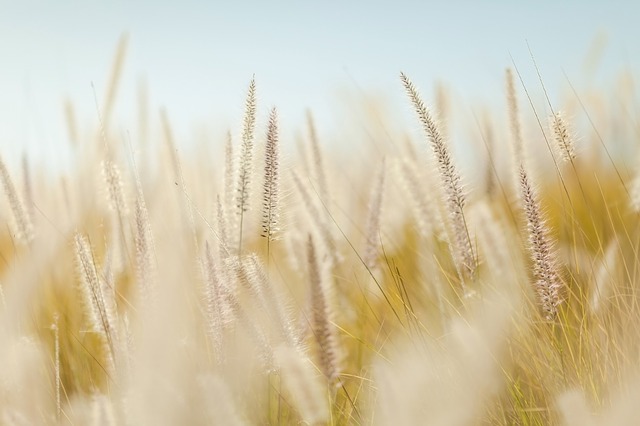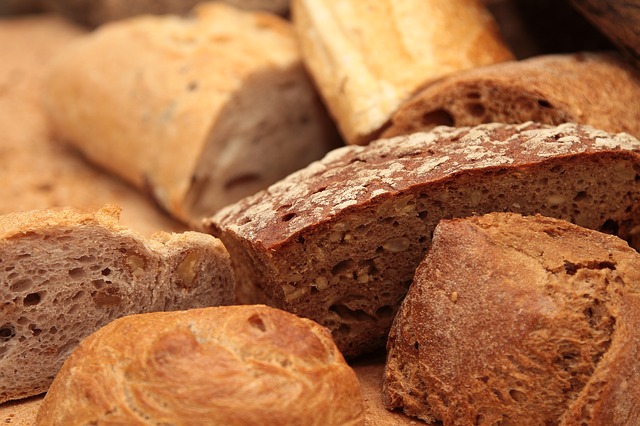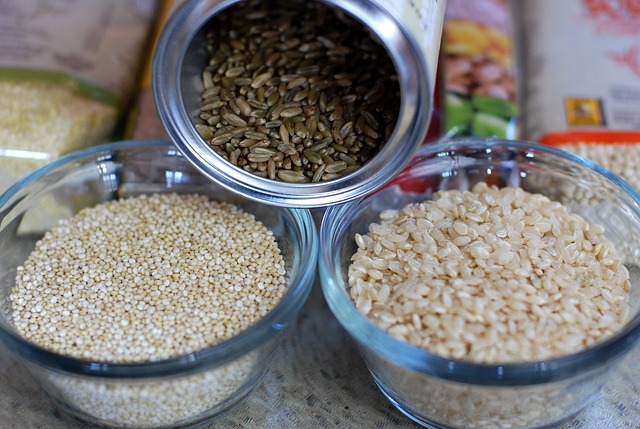Even though the terms wheat and gluten are often used interchangeably, they are not the same thing. Dr Eva Detko explains the difference…

Why is it important to know the difference between wheat and gluten?
Understanding the difference between wheat and gluten can help avoid any unnecessary symptoms that may be brought on by ingesting the wrong foods. Confusing wheat and gluten may have less of an impact on people with non-coeliac gluten sensitivity or wheat sensitivity, but it can have more serious consequences for those with wheat allergy and coeliac disease. The same way as coeliac disease and non-coeliac gluten sensitivity are two very different conditions (despite sharing many of the same symptoms), wheat sensitivity and wheat allergy are not the same.
Wheat sensitivity, or wheat intolerance, is a delayed reaction caused by gluten (similarly to non-coeliac gluten sensitivity), and is not life-threatening. Whereas wheat allergy is a true allergy, although it is far less common. People with a wheat allergy tend to display symptoms almost immediately, or within
a couple of hours, following ingestion of foods containing wheat ingredients. Symptoms can include stuffy nose, watery eyes and skin irritations, but they can be much more serious, i.e. difficulty breathing or an anaphylactic shock. Wheat allergy is more common in children than adults. It usually develops during infancy and many children outgrow it by the age of five, but it can also persist into adulthood.
To confuse matters further, some people refer to wheat allergy as gluten allergy, but the actual allergic reaction to wheat involves more components of wheat than just the gluten proteins. So far, researchers have identified almost 30 different potential wheat allergens. Therefore, people who have been diagnosed with wheat allergy need to avoid any foods that contain wheat ingredients.

Gluten versus wheat
Gluten is a composite protein made up of gliadin and glutenin proteins. Gluten is found in wheat, rye and barley. This means that while all foods that contain wheat also contain gluten, not all gluten comes from wheat. Wheat has a much higher content of gluten than rye and barley. However, those who have problems with gluten should eliminate all of the above from their diet. It is worth noting that wheat and gluten containing ingredients are often listed under different names, so it is important to scan labels for the presence of: bran, semolina, couscous (dried granules of semolina), triticale (a hybrid of wheat and rye), farro, emmer, farina, udon, einkorn, kamut (Khorasan wheat, or Pharaoh grain), bulgur, durum wheat, spelt (dinkel, or hulled wheat) and orzo.
Other wheat and gluten-containing ingredients and products to be aware of when shopping include: brewer’s yeast, breadcrumbs, bread stuffing, hydrolysed wheat protein, modified wheat starch, malt, malt extract, malt syrup, malt flavouring, malt vinegar, malted milk, soya sauce, oyster sauce, panko, matzah (traditional Jewish bread), atta (chappati flour), and fu or seitan (Asian food made from wheat gluten). Because all wheat-containing foods contain gluten, it is often assumed that if foods are gluten-free they are automatically wheat- free. That is certainly not the case. Some gluten-free products contain ingredients that are originally derived from wheat from which gluten has been removed.
One example of that is gluten-free wheat starch (Codex wheat starch) used by some manufacturers.The Codex wheat starch was first introduced to improve the quality and texture of the gluten-free products, particularly baked goods. It is produced by extracting gluten out of wheat flour.This is achieved by first kneading the flour and then washing the starch out of the dough. The amount of gluten in the Codex wheat starch is at the level that is safely tolerated by people with coeliac disease. However, it is not safe for people who react to wheat.
Ingredients that are both wheat and gluten-free
There are many substitutes for gluten- containing grains. Quinoa, amaranth, buckwheat, millet and teff are not only suitable for wheat and gluten-free diets, but are also more nutritious than wheat. Moreover, they are incredibly versatile and can be sourced in a flour, grain, or flake form.This means that they can be used in baking, as breakfast cereals, as well as in savoury dishes. There are, of course, many other types of gluten-free flour, including: rice, corn, tapioca, potato, almond, hazelnut, coconut, carob, chickpea, and sorghum (also known as jowar flour). When purchasing gluten-free flours on their own, it is worth noting that their texture dictates how they behave in recipes. As a general rule, flour mixes produce better results than single flours, provided that factors such as relative flour weight and absorption rate have been considered.


Dr Eva Detko’s book Wheat, Gluten and Dairy-Free Recipes is available from www.dr-eva.com/new-cook-book Photography by Peter Eccott. (rrP £13.85). a Kindle edition is also available. (rrP £6.24)
Want some gluten-free recipe inspiration?
Check out our online catalogue of delicious gluten-free recipes, and of course for even more gluten-free goodness, grab a copy of the magazine.
